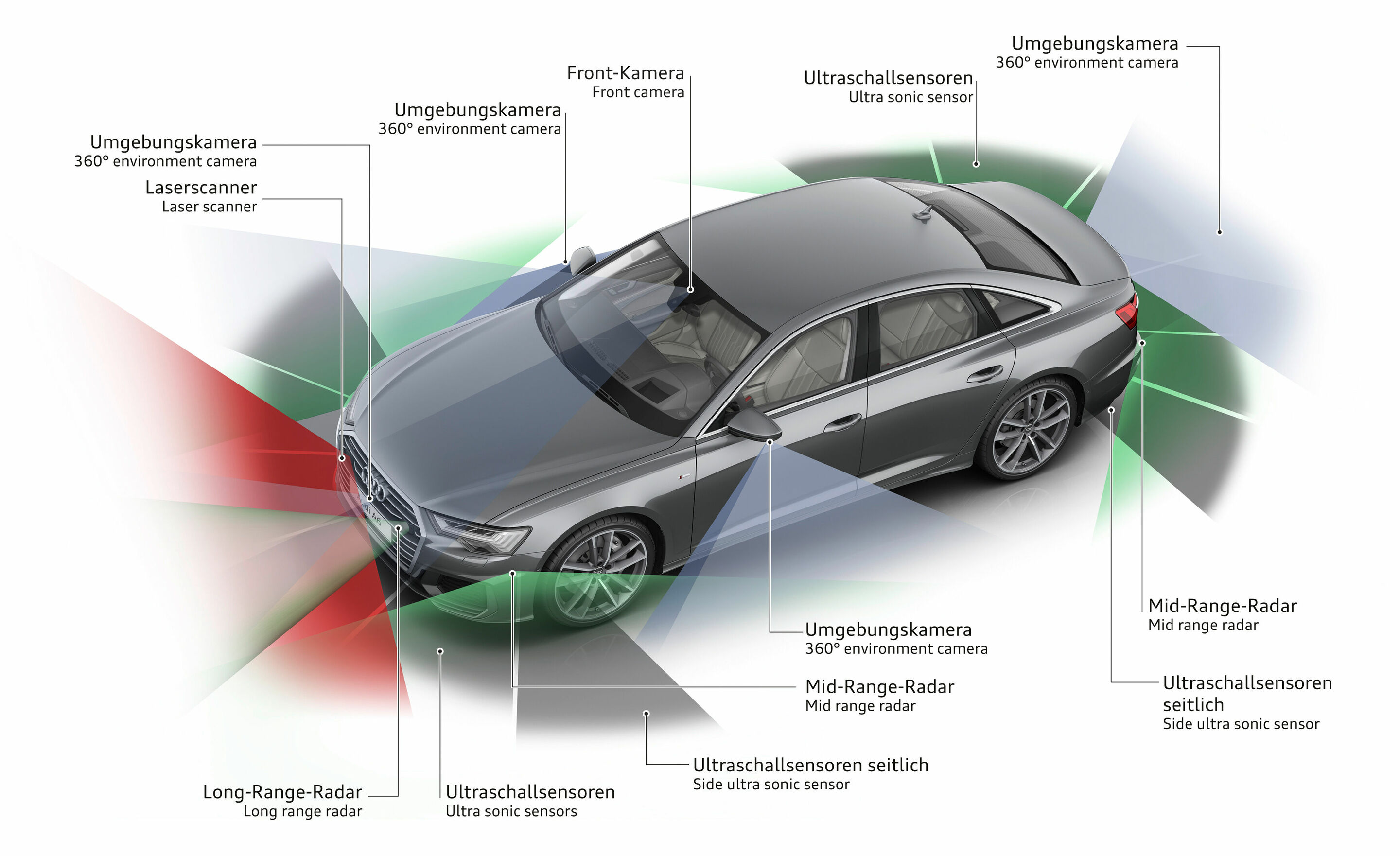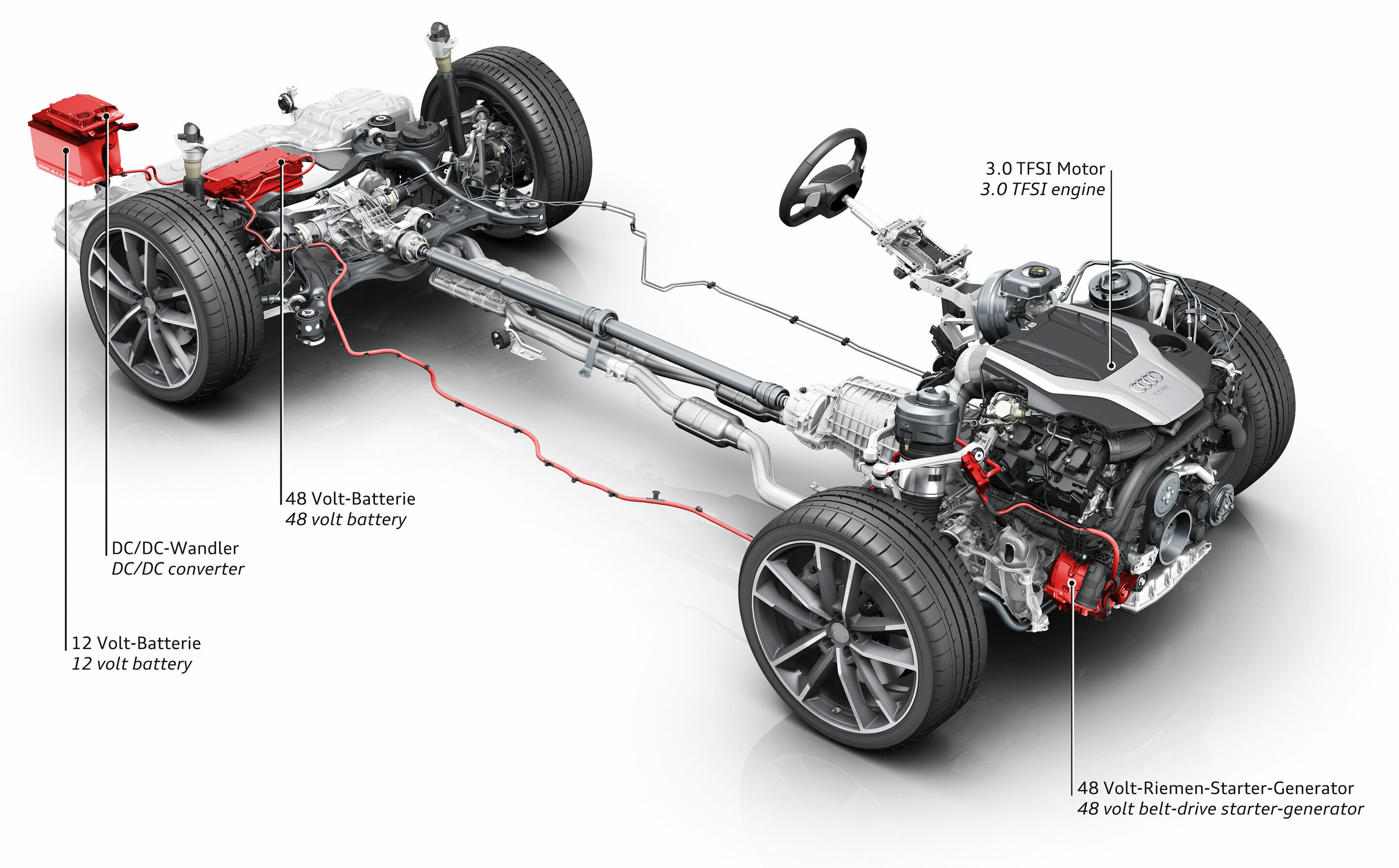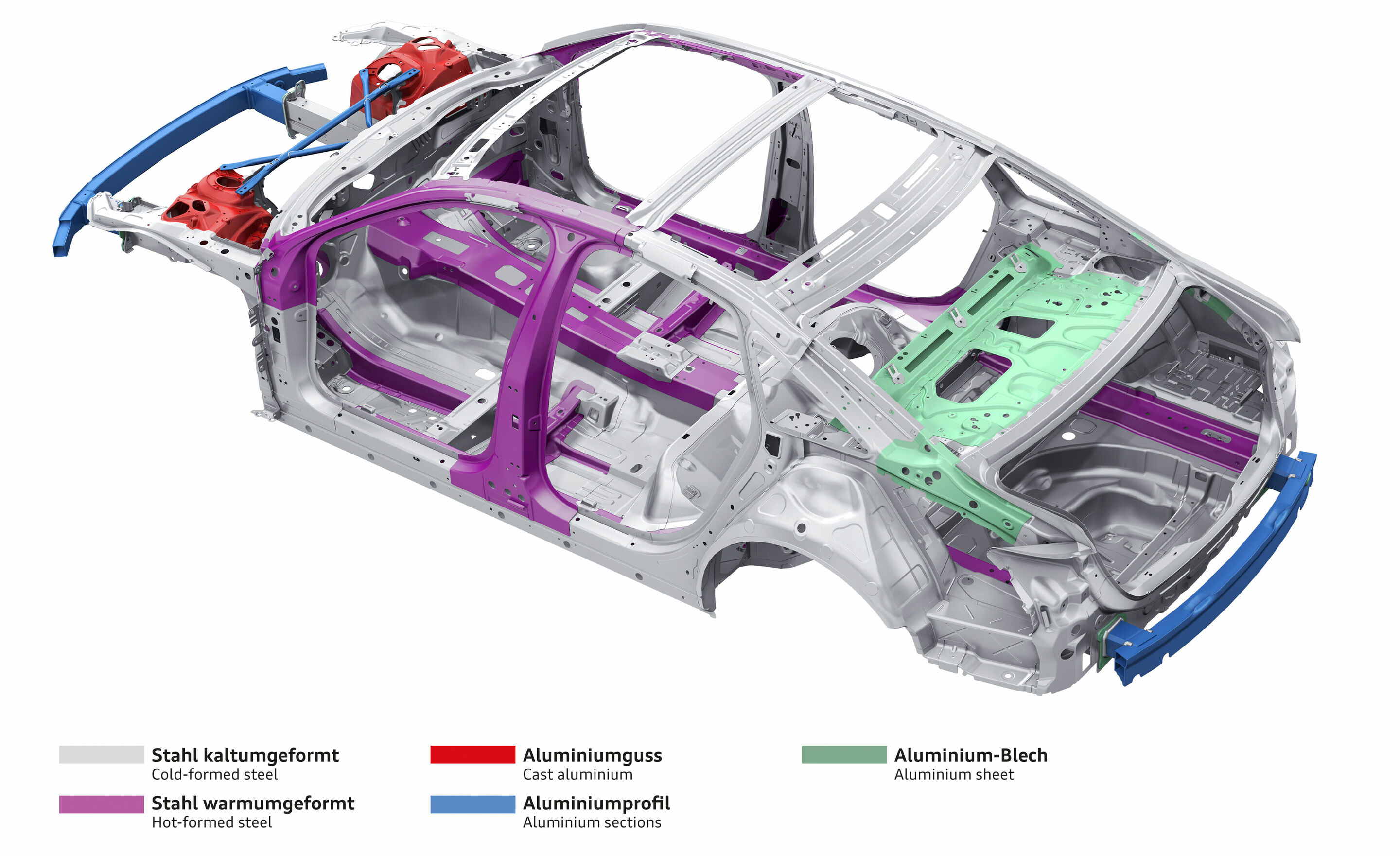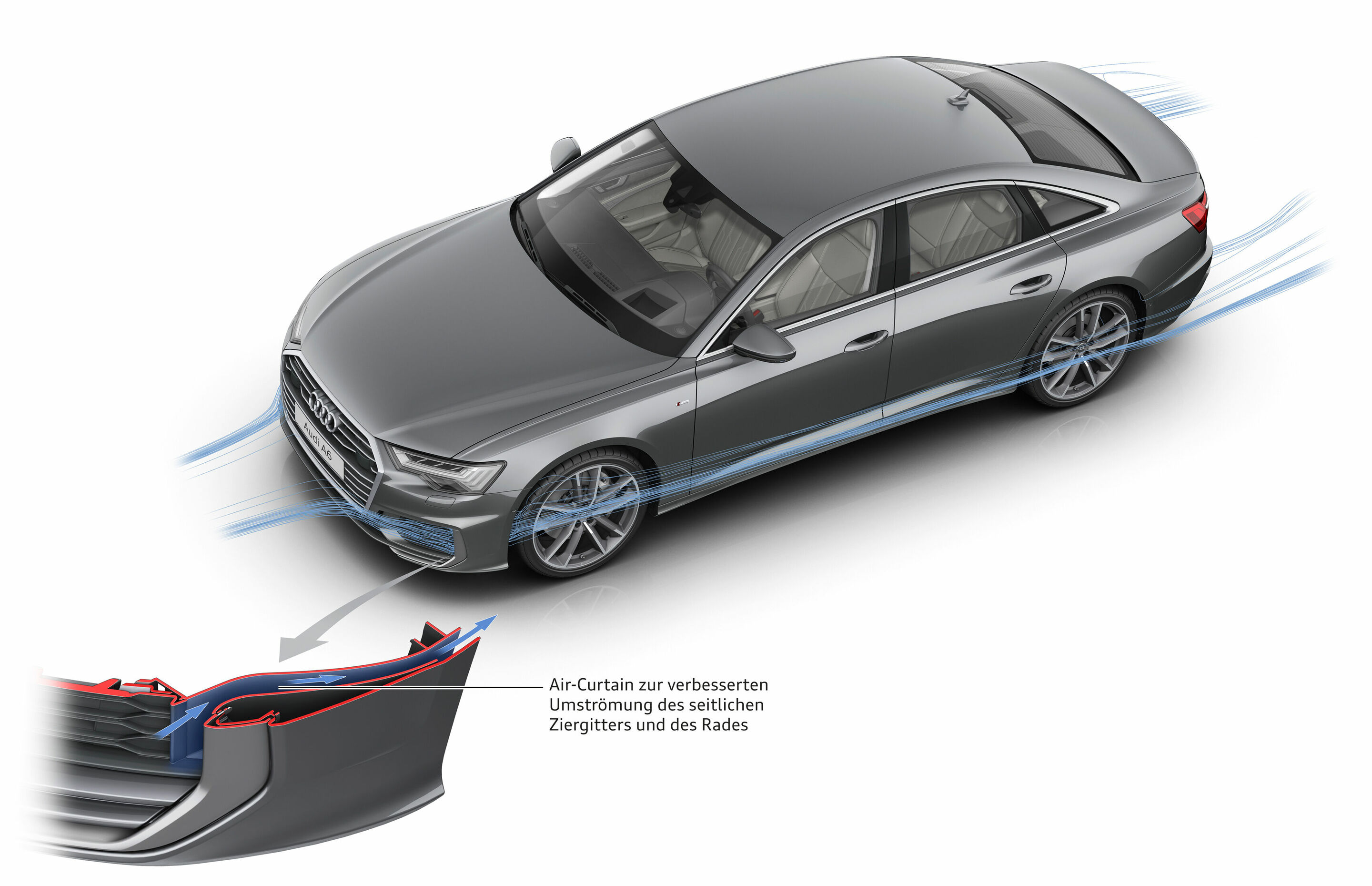COMFORT AND CONVENIENCE
Back to overviewThe new Audi A6 reduces the driver’s workload with up to 39 assistance systems, setting the benchmark in the premium class in terms of comfort, convenience and safety. All engines incorporate as standard an MHEV system to enhance efficiency. The business-class sedan offers lots of space and new features for extremely pleasant traveling. With its low interior noise, the A6 is an expert for long journeys.
Driver assistance systems
The assistance systems make driving even more convenient, effortless and safe. They are bundled into the “Tour,” “City” and “Park” packages. A highlight in the “Tour” assist package is the adaptive cruise assist (ACA). It uses the Mild Hybrid Technologyand enhances this with a lane guidance function over the entire speed range and the traffic jam assist. As a supplement, Audi offers the bottleneck assist, which makes steering corrections in roadworks if the car gets too close to the edge of the road. The bottleneck assist also automatically maintains a safe distance to vehicles which invade the car’s lane, and automatically continues the overtaking maneuver once the lane is free again.
An ideal upgrade for the adaptive cruise assist is also the efficiency assist. This brakes and accelerates the vehicle predictively by analyzing Car-to-X information, sensor information and navigation data as well as traffic signs. Other modules in the Tour package include turn assist, collision avoidance assist, high-beam assist, camera-based traffic sign recognition and the Audi pre sense front safety system.
Audi pre sense basic comes standard in all Audi A6 sedans; another highlight, crossing assist is included in the “City” assist package. If the mid-range radars at the vehicle’s corners, which can look roughly 75 meters (246.1 ft) ahead, detect crossing traffic in front of the car, the system warns the driver; if necessary it applies the brakes. Cross traffic assist rear, the exit warning and the lane change warning are based on the signals from the rear mid-range radars. The Audi pre sense rear and Audi pre sense front safety systems are also part of the assist package.
Behind the new assistance systems in the Audi A6 lies a portfolio of sensors, which supplement each other in their particular characteristics and are designed redundantly to provide maximum system safety. The major innovation in this respect is the laser scanner.
Fully equipped, the set includes 24 sensors:- a laser scanner up front,
- a long-range radar up front,
- four mid-range radars at the corners,
- an infrared camera up front.
- a front camera at the top of the windshield,
- four 360 degree cameras at the front, rear and exterior mirrors and
- twelve ultrasonic sensors at the front, flanks and rear.
All sensor data comes together in the central driver assistance controller (zFAS) – the central computer that fuses all sensor data. It continuously computes a differentiated image of the surroundings; as a result, the assistance systems respond even more precisely and earlier than in the predecessor model. The navigation too is even more precise.
Broad-based electrification
Mild Hybrid Technology (MHEV) comes standard on all engines in the new Audi A6. This signifies that, after the A8 and the A7, Audi has now fully electrified another model line. All models with V6 engines have a 48V main electrical system. At its heart is a belt alternator starter (BAS) connected to the crankshaft. During deceleration the BAS can recover up to 12 kW of power, store the power in a separate lithium-ion battery with 10 Ah capacity, which is housed in the rear of the car.
If the driver takes his foot off the accelerator between 55 and 160 km/h (34.2 and 99.4 mph), the new Audi A6 can coast with the engine switched off – up to 40 seconds. As soon as the driver accelerates again, the BAS starts the engine quickly and smoothly. The 48V system enables the function range of the start-stop mode to be extended up to 22 km/h (13.7 mph). The mild hybrid system is connected to the camera sensors to enhance comfort further. In this way, the engine starts from stationary even with the brake pressed once the front camera detects that the vehicle ahead starts to move. In real-world driving, MHEV technology reduces fuel consumption by up to 0.7 liters per 100 kilometers according to Audi measurements.
Body and interior
The body of the new A6 consists of an intelligent mix of materials of aluminum and steel. The ultra-high-strength backbone of the passenger cell is made from hot-formed steel components. In large areas of the body shell, Audi also uses sheet metal blanks where the wall thicknesses vary between 0.75 and 2.05 millimeters (0.03 – 0.08 in) depending on requirements. These blanks combine low weight with high strength.
The body shell also uses aluminum parts, for instance on the parcel shelf and the C-pillar supports. The doors, the hood, the front wings and the trunk lid are also made of aluminum sheet parts. The new Audi A6 in the lightest model variant, which will be launched at a later date, is 1,645 kilograms (3,626.6 lb) (without driver).
The body has been further developed in many aspects: The newly designed structural front end and the torsion rings contribute substantially to the high body rigidity. The front axle is joined more rigidly than on the predecessor model. The optimized load application points and the meticulous tuning of the resonances improve the body’s acoustic characteristics. In the exhaust system, the silencers are connected to each other in a unique way to minimize low-frequency noise.
The new Audi A6 may only have grown a few millimeters compared with its predecessor model, but it nonetheless offers much more space: The wheelbase that is twelve millimeters (0.5 in) longer provides 21 millimeters (0.8 in) more interior length. In this criterion the Sedan beats all direct competitors. The same applies to the rear seats in relation to legroom and kneeroom. In the luggage compartment, with its 530-liter (18.7 cu ft) capacity, a loading width of 1.05 meters (3.4 ft) remains between the wheel arches. Optionally, the trunk lid opens and closes electrically; in another configuration with the convenience key also by means of a kicking movement.
The newly developed seats underline the character of the A6 as a supreme long-distance sedan – they are slim and lighter than in the previous model. The design of the seat cushion and backrest provides a high level of comfort and good lateral support. As an alternative to the front standard seats, Audi supplies the sport seats (standard with the A6 sport). The top-of-the-line options include the new comfort seats and the super sport seats. The latter are available as an option in the S line sport package – they offer the driver excellent lateral support thanks to high bolsters and an integrated head restraint. The comfort seat, available from the sport and design trim lines, provides numerous setting options. Lumbar support and bolsters are moved pneumatically. They can optionally include 3-stage seat heating and seat ventilation and a versatile massage function. Ten air chambers integrated into the backrest pamper the back in seven different programs and three intensities.
In the rear of the new A6, Audi generally fits a three-seat system, optionally folding, with side airbags on the outer seats and illuminated seat belt buckles. Many large storage compartments are available onboard the Sedan; a storage package can also be specified. A choice of four multifunction steering wheels is available – with three of four spokes, round or flat-bottomed, with or without shift paddles and a heated rim.
Two-zone automatic air conditioning comes standard; a four-zone system is available for the new A6 as an option. Its highly powerful filter neutralizes many allergens, while also eliminating the bulk of gases and particulate matter. The air quality package provides the ideal complement – it includes an ionizer and fragrancing with subtle aromas, which can be adjusted with several levels of intensity.
The windscreen wipers are optionally available with spray nozzles, which are integrated into the wiper arm. The water is sprayed directly in front of the blades, always at the correct wiping angle. The spray is metered depending on the road speed, the outside temperature and the level of soiling. As a result, the windshield is cleaned rapidly, economically and reliably.
Aerodynamics and aeroacoustics
The basic version of the new Audi A6 has a drag coefficient of 0.24 (with a model due to follow after the market launch). The outer areas of the air inlets have separate apertures. Part of the airstream flows through them into the wheel arches, where it is channeled specifically past the wheels. The mirrors mounted on the shoulder line generate minimal aerodynamic drag; the edges of the lights help provide a defined flow separation at the rear.
On the underfloor, paneling covers the engine compartment, the side areas of the passenger cell, the rear trailing arms, the fuel tank and the SCR tank. Air dams and small spoilers – including in front of the front wheels – specifically channel the air flow.
The new Sedan also achieves top figures with aeroacoustics. The sealing concept for the doors is highly complex. Acoustic glass, consisting of three layers (glass / acoustic film / glass), is also available as an option. Tinted privacy glass for the rear, a heated windshield and rear blinds are also available. The large panoramic glass sunroof floods the interior with light and air.
All terms marked in the text are explained in detail in the technology lexicon at www.audi-mediacenter.com/en/technology-lexicon.
The equipment, data and prices specified in this document refer to the model range offered in Germany. Subject to change without notice; errors and omissions excepted.



